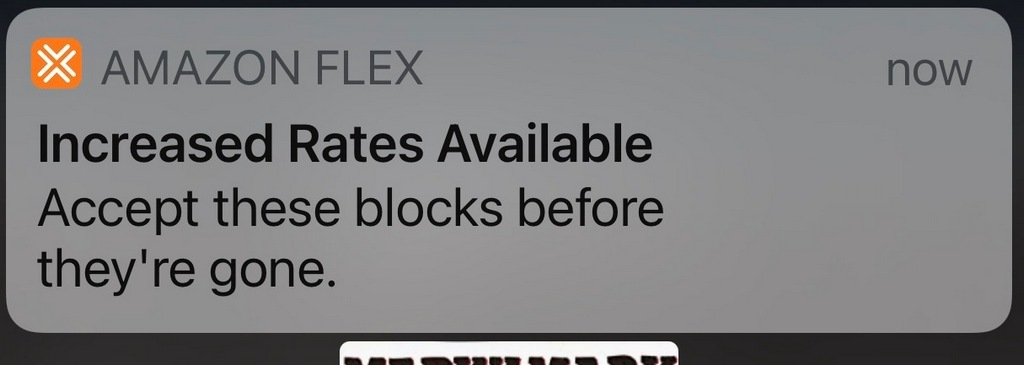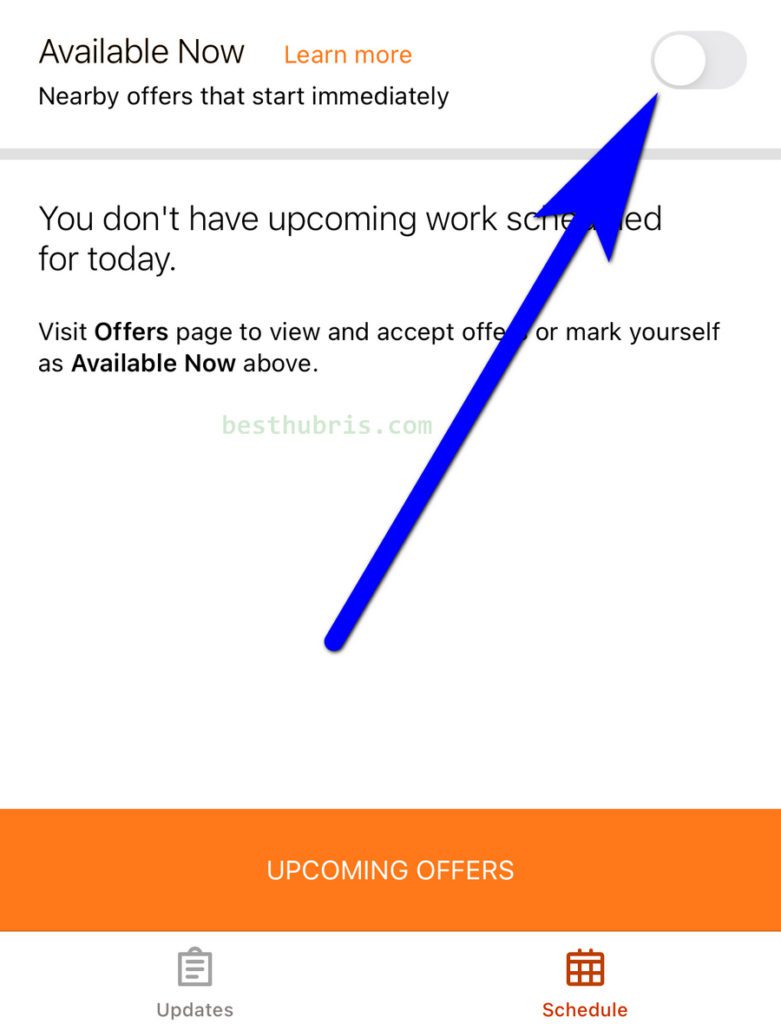How much money can you make with Amazon Flex? Is Amazon Flex a good way to make money as a side hustle? Here is my real world Amazon Flex review.
Is working for Amazon Flex worth it? That was the question I set out to answer after I got an email from Amazon encouraging me to sign up for their gig work platform called Amazon Flex.
How To Sign Up for Amazon Flex?
Signing up for Amazon Flex is simple, as long as Amazon is hiring more people in your area. If they already have enough regular Amazon drivers or plenty of Flexers to service an area, they may not let you sign up. Otherwise, the process it pretty easy. You will have to input your real name and driver’s license number, as well as upload a picture, so if you’re a privacy fanatic, or you don’t trust Amazon, this won’t work out for you.
How Much Does Amazon Flex Pay?
The amount Amazon Flex pays depends on several factors. Most importantly, the Amazon Flex payrate depends on where you are. Here in the Denver Metro area, the lowest pay rate I’ve seen is $18 per hour. The pay rate that I consider sort of “standard” is $20 per hour.
The other thing the Amazon Flex hourly rate depends on is that type of delivery. Regular Amazon Flex deliveries seem to pay around $20 per hour, with some starting at $18. Maybe, those have more drivers, or something. Sometimes, I will get an alert saying that there are blocks available that are paying higher rates. This is when I will see rates at $30 per hour and in some less common cases, up to $33 per hour.
There is another kind of block that shows up as “Sub Same-Day.” I don’t know exactly what that means, but these blocks can be “bigger” area wise. In other words you can drive a LONG way, but not every time. These blocks usually start at a higher minimum. Although I’ve seen them as low as $20 per hour, they usually start at $22.
The Prime Now Amazon Flex deliveries pay an hourly rate plus tips. The Amazon Flex app shows this pay rate as a range like $42.00 – $72.00 with a bit of text under the rate clarifying that your actual pay is $42.00 from Amazon, plus whatever tips you get. The tips amount is “…more than 25% of similar blocks in your area recently earned at least $30.00 in tips.” My personal experience over the several Prime Now deliveries I did is that most people who tip, tip a flat rate of $5. I’m not sure if Prime Now app suggests that amount or what. So, your actual earnings are based on how many people you deliver too, but the app won’t show you that in advance.
Amazon Flex Surge Pricing
I don’t think the Amazon Flex people officially call it surge pricing, but it works sort of the same. If there are too many blocks and not enough drivers, or if there is a block with a start time getting closer, the Amazon Flex app will raise the rates to encourage someone to take the block. If you turn on notifications, the Flex app will send you an alert notifying you to check out higher rates. In these cases, Amazon Flex pays $30 per hour, $33 per hour, and sometimes more.

Depending upon who you are, and what you want to get out of your Amazon Flex gig, you can wait for higher rates before accepting. Although, then you run the risk of other people taking all the delivery offers and you get left with nothing. It’s a little like playing chicken with the Amazon Flex app rates.
Amazon Flex Available Now
There is another option in the Amazon Flex app for people looking to top off some income with Amazon Flex as a side gig, or side hustle, if you prefer. Instead of signing up for a regularly scheduled offer, you can set yourself to Available Now in the Amazon Flex app. When you set Available Now, Amazon Flex uses your phone’s location and matches it to any delivery needs there might be nearby.

For example, when I set myself to Available Now, I usually get offers from the nearby Whole Foods. Typically, it is just one or two stops needing to be delivered within one hour, or 90 minutes, or something. Occasionally, these instant offers will turn into full on routes with 8 or 9 stops, all over the city.
You can view the offer and accept it, or not. Unlike scheduled offers, the instant offers show you exactly how many stops, and where they are, so you can really determine if it is worth it for you. You have 60 seconds to decide, and there is no penalty to decline. I’ll often turn it on if I have a light workday, or no plans. If it happens, it happens. If not, not worries.
Amazon Flex Expenses
The main expense for doing Amazon Flex is gas. As you drive around the city, you use your gas and that expense comes right out of your earnings. You’ll hear other people talk about wear and tear on your car, and they aren’t wrong, but that is harder to quantify. While you’re at it, keep in mind that many repairs or issues with a car or truck come from its age, whether you drive the miles or not.
What you do need to understand is that if you do a lot of Amazon Flex driving, you are putting a lot of miles on your car. That is fine if you plan to drive your Honda Passport until it drops dead in 200,000 miles. It is a big problem if you are using a leased automobile. Remember, a car lease allows a certain number of miles and you pay for every mile over. Depending upon the lease, that could eat up every bit of your earnings.
The other thing you need to understand is taxes. Whether you have a regular job and do Amazon Flex on the side, or you do it full time, your driving for Amazon Flex qualifies for the IRS mileage deduction. For those Amazon Flex offers you took in 2021, you get to deduct 56 cents per mile. Remember that this figure is supposed to account for gas AND the wear and tear on your car. It might have been a bit low for 2021 because gas prices went up during the year after the rate had already been set.
For Amazon Flex shifts that you take in 2022, the mileage deduction rate is 58.5 cents per mile.
If you don’t want to itemize your personal deductions, and I don’t blame you, you can consider your driving for Amazon a business and use Schedule C to deduct your expenses. My advice is to do your taxes both ways and see how you come out ahead. I find it easiest to use tax software like TurboTax instead of doing my taxes manually, but whatever works for you.
Too many people are not used to using rich people tax tricks. One of those is taking all of the tax deductions you possibly can and considering them part of your income. You see, if you just compare what you earn to what you pay out in gas, that is small income thinking. Obviously, you have to be sure your Amazon Flex driving is worth it in real time, but don’t decide it isn’t worth it, until you consider your whole financial picture including taxes, especially if you have other income.
Is Working For Amazon Flex Worth It?
Is delivering for Amazon Flex worth it? Final answer.
For me, delivering for Amazon Flex is not worth it for most cases. That isn’t because Amazon Flex does not pay enough, it is because I don’t live close enough to an Amazon Flex distribution center. The nearest one is almost 33 miles away. That means I drive 66 miles round trip, using a little over an hour of my time in total.
That makes shorter shifts on Amazon Flex not worth it all. A good paying two-hour block for $66 is $33 per hour if you live nearby. For me, it is $22 per hour, plus whatever mileage I drive, plus another 66 miles on top of that. That might be worth it, but the real detriment for me is the time. I have a small business and I’m also a work at home dad. I’m just looking to grab a few bucks for a few hours. Turning two hours of not working and not parenting/chauffeuring into three hours is actually a big deal for me.
Now that does not mean Amazon Flex is not worth it for someone in a different situation. Amazon Flex is worth it for someone who lives closer to an Amazon Flex station, and for someone looking to work more hours.
For example, if I were willing to drive for eight hours, and got an average of $25 per hour, that is $200. Even if I put in my hour of driving to and from the distribution center, that still works out to $22.22 per hour. That is not bad. If I could up that average with some savvy waiting until $30 per hour, that might really be worth it, including the extra 66 miles. Remember, all the miles, including those 66 miles are deductible as a business expense. (66 miles times 58.5 cents per mile = $38.61 tax deduction — my car doesn’t use that much gas 😁)
Even better, if I were willing to work eight hours and I only lived 10 miles / 10 minutes from the station, driving for Amazon Flex is worth it easily.
What I Do Real World Amazon Flex
While I don’t take scheduled shifts from the far away Amazon distribution centers, taking shifts from the couple of nearby Whole Foods is totally worth it. For whatever reason, Amazon offers for my nearby Whole Foods never show up on the app for me. Maybe some is reserving them before I ever get a chance. Maybe someone gets up at 5:00 am and grabs them all. Either way, they need them more than me.
However, whenever I have a low, stress, unscheduled afternoon, or slot of time, I set my Amazon Flex app to Available Now. About half the time I get a notification of an instant offer. I take a careful look and decide if I want to spend that much time and effort compared to the money I would earn. I estimate about $5 per person in tips minus one person who sucks and doesn’t tip. It’s close enough.
Amazon Flex Rating
For my Amazon Flex review, I’d give Amazon Flex a solid four-star rating as side gigs go, especially if you learn all the little ins and outs like waiting for pricing to go up, and what time of day has the best routes, and so on. Even if you just dabble like me, it’s good for spending money, or for cash to spend on your other start up idea, small business, side gigs or maybe those little passive income projects.
The best part is that there is no downside. If you sign up, get approved and only deliver twice, or even if you never take an offer, nothing happens. There is no expense, fees, or cost to you. I guess the best advice is, “It can’t hurt to try it.”